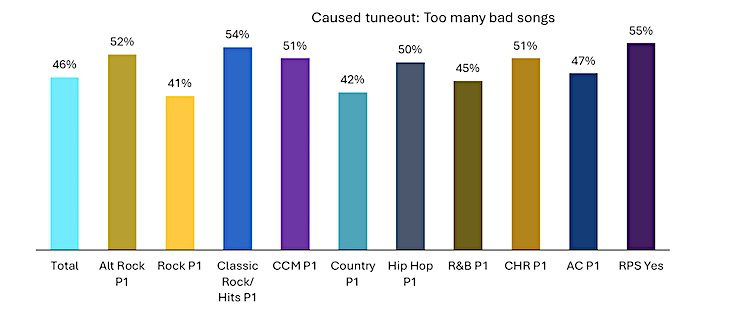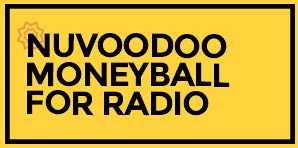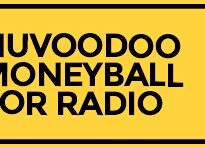Moneyball: How Safe is Your ‘Safe’ List?
• When we asked the 2,000+ nationwide respondents in NuVoodoo Ratings Prospects Study 26 what causes them to change stations, too many bad songs is at or near the top of the ranking among most format P1 groups. Even among the few formats where bad songs are the cause of tuneout for less than half the P1s, they remain an unforced error for at least two P1s in five.


Those among our already research-friendly sample who would meet the necessary criteria to be included in the ratings sample (labeled “RPS Yes” in the chart above), 55% say bad songs are a cause of tuneout. This means bad songs are nearly ten points a bigger cause of tuneout among those likely to give radio its report card.
Assisting a new client managing their on-air library after a recent music test, the client remarked that the “safe list” they’d been using suddenly didn’t feel very safe. Songs they had in power rotations weren’t very strong in the music test and many of the songs that should be in power rotations had been in lower rotation or off the station.
The station had been relying on so-called safe lists pulled from Mediabase monitors. It’s been done for years: you find in-format stations from larger markets in your region or from markets that seem similar to yours and determine the most commonly played gold titles across that panel of stations. If everyone’s doing it, it must be safe — or so the thinking goes.


Among a panel of stations being used to model a safe list, it’s all too possible that none of them has a recent music test. Songs that became burned out from overexposure or just fell out of favor remain in the list. Songs that have become better liked due to exposure elsewhere don’t show up at all.
NuVoodoo has offerings that can help get music testing back in the budget. OMT Lite focuses on exactly what you need to keep your library in tune: 100 perfectly screened respondents evaluating 400 hooks. With the tighter hooklist and no question groups, we can turn these studies quickly and deliver great results for budgets well under $10K.
We have extensive experience conducting coordinated library tests across multiple co-owned stations within a format. The stations provide a single hooklist and we’re able to save on fielding and processing. The stations get a significant sample of their important listeners and the confidence of comparing their market with others. This approach allows us to cut the per market charge in half. And we remain able to offer tests partly paid using barter in larger markets.
We’re radio people at heart, and we want to do everything we can to make sure stations get the revenue they deserve. We’re making the brand lift studies we’ve been doing quietly for a small list of clients available across the business. Stations using them are finding success in increased renewals, extensions, and additional sales by proving the effectiveness of their campaigns for important advertising clients. We showcased a recent brand lift study for an expanding local bank in a webinar. You’ll get all the details of their success in less than 15 minutes in the webinar video on our website.
NuVoodoo can scale brand lift studies to make them work for radio ad budgets. Studies can be run across a group or market cluster. We can cover several clients in a study when schedules align. We work to make costs commensurate with budgets. Reach out to me at leigh@nuvoodoo.com for more information. — Leigh Jacobs



